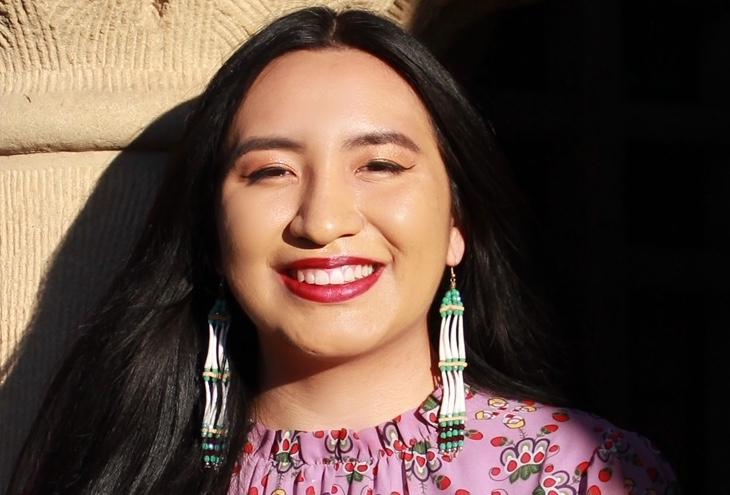I grew up on the Pine Ridge Indian Reservation in South Dakota around traditional ceremonies, learning spirituality from my elders and science from my mother. My parents and grandparents prioritized the Lakota way of life and I always wanted to be like them. They are visionaries, and I’m thankful I was raised to see how innovative, grounded, and hopeful Lakota people are. My Ina (mother) was a single mother who raised my siblings and me while attending school and working full time before she met my Ate’ (stepdad) when I was two years old. Seeing their work ethic and living the Lakota way of life provided the foundation that has inspired me.
I often think about how Lakota kids are descendants of superheroes — they all come from amazing ancestors who accomplished great things. My people come from those who fought in the Battle at Greasy Grass (Little Bighorn) and won. Success is who we are.
Still, it’s important to mention living conditions on the Pine Ridge Reservation, which have been very harsh since the onset of colonialism. We don’t have access to clean water — some have no access to water at all. We live in a food desert and our health disparities are some of the worst in the United States. While these realities need to change, they don’t define us.
When I was 12, I was in a STEM program that took us to sacred sites all across the Black Hills. A Lakota woman environmental engineer there inspired me and grounded me in my culture. When I joined AISES at age 15, I was exposed to more inspirational Indigenous engineers and scientists. In high school I worked hard. For three years I did summer internships at the National Institutes of Health. I didn’t drink and I didn’t do drugs.
I went to college thinking of medical school, but I put aside those aspirations when I learned that more Native Americans die from preventable environmental problems than any other cause. Reliable access to food, water, and health care is crucial — as is finding solutions close to home. This led me to focus my studies on environmental engineering.
When I arrived at Stanford, I experienced culture shock — I felt like a foreign student who didn’t belong there. Many times people told me I couldn’t do anything in STEM because I’m a rez kid. I resolved not to listen to people who tell me what I can’t do, when they don’t understand Indigenous kids. I had to push back when I knew I could do something.
Another part of that path to self-advocacy was learning to let people know when I needed help. My high school didn’t have STEM prep, but my professors didn’t know that, so I had to speak up when I needed tutors, mentors, or internships. I was the first Indigenous woman in many of the spaces within my program — I had to break a lot of glass ceilings.
A bright spot is the Indigenous community at Stanford, which has been good to me. The Native American Cultural Center is great. If I could give advice to high school students choosing a school, it would be look at how many of that school’s Indigenous students are in STEM, and that’ll give you an idea of how well the school will support you. But again, don’t let that deter you.
I had not expected it, but creative writing has been one of my most valuable classes. I can’t imagine where I would be without it. My professor taught me how to tell stories, develop my voice, and more. Now I write poetry and articles about environmental and Indigenous issues. I know that developing these skills is going to help me long term in advocacy.
I was the first Indigenous woman on the Stanford Global Health Student Council, where I’ve been advocating for Indigenous sovereignty. I learn about successful examples of community solutions to environmental issues in foreign nations as I strive to find solutions for my own community.
I know I made the right choice in studying environmental engineering, but I haven’t given up on medical school. I will be a better doctor during climate change because I’ve studied the impacts it will have. I’ll also continue to focus on what I can do for my community. I try to coach young people from Pine Ridge — I was the director of a summer school program at the Pine Ridge Girls’ School, teaching about STEM. I also facilitated a partnership between Stanford Center for Innovation in Global Health and my Nation, where I helped health care professionals account for specific needs on the reservation.
My dream is that my people will no longer have to suffer. I will always have hope. I want to instill that same hope in our youth. I want us all to have such quality lives that we’re able to achieve our dreams.













